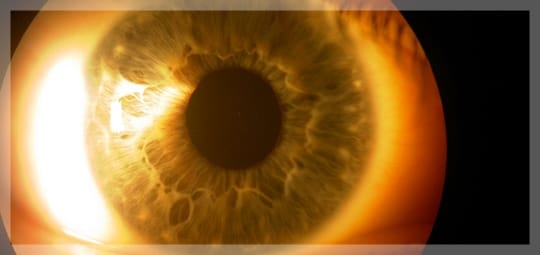Don’t Take Your Eyes for Granted
We depend on our eyes, and we should ensure they’re well taken care of and healthy. We’re here to help you preserve and bolster your best vision possible.
Our comprehensive eye exams at Littlefield Eye Associates assess your eye health using trusted diagnostic technology. We look for signs of eye diseases, even if you are asymptomatic, because some eye conditions emerge without causing changes to your vision.
The risk of developing an eye disease is unique to each person. With every patient, we aim to find signs of any eye conditions early and start treatment to prevent them from worsening or causing irreparable harm.


How Do We Diagnose Eye Diseases?
Finding signs of eye disease has come a long way, thanks to technological advances. With new equipment and proven methods, our doctors can detect, diagnose, and monitor your eye health accurately. All this to say, we have the tools to get you on track to healthy vision.
Common Eye Diseases & Conditions
Eye diseases can emerge at any time, but as we age, they are more common. Many eye diseases can progress unnoticed with few early symptoms. So, regular eye exams are essential for detecting eye diseases and helping protect your overall eye health.
Age-Related Macular Degeneration (AMD)
Age-related macular degeneration (AMD) is linked with the aging process and is common in adults over 50. It’s an eye disease that affects the macula, the tiny part of the retina responsible for central vision. We need our central vision for tasks like driving or reading.
There are 2 types of AMD:
- Dry AMD emerges when the macula deteriorates slowly because of aging. This is a progressive disease that causes the central vision to become blurred.
- Wet AMD occurs due to abnormal growth of blood vessels in the retina, which break and leak blood or fluid into the macula. Wet AMD usually starts as dry AMD, but not everyone with dry AMD will develop wet AMD.
ad are essential to detect, diagnose, and monitor this eye disease. Early detection can help prevent or slow vision loss that results from AMD.
Glaucoma
Glaucoma is not a single disease, but a group of eye conditions affecting the optic nerve. This part of your ocular system delivers messages from the retina to the brain.
We most often see open-angle glaucoma among patients, the form where excess fluid can cause increased pressure in the eye. Generally, early stages of open-angle glaucoma don’t show any noticeable symptoms, but it can damage your vision, reaffirming the need for regular eye exams.
Other types of glaucoma, including angle-closure, normal tension, or congenital glaucoma, typically cause symptoms early on, including hazy vision, severe eye pain, or sudden sight loss.
To test for signs of glaucoma, we use tonometry to measure your intraocular pressure (the pressure on your eye). With the iCare innovations, we can test your eye pressure in a “no puff” manner.
Cataracts
Cataracts appear as your eye’s lens becomes less flexible with age, affecting your vision with symptoms like blurry or foggy vision, washed-out colors, light sensitivity, and feeling that there’s a film over your eye.
If it’s early in its development, cataracts can be remedied with an updated glasses or contact lens prescription. Beyond that, if your vision becomes so impaired that it affects your life significantly, we may suggest cataract surgery. This procedure is common, safe, and effective.
Retinal Detachment
A retinal detachment is a detrimental eye emergency in which the retina detaches from its normal position in the visual system.
The departure itself may not cause pain, but be aware these warning signs and seek immediate attention if you experience any of them:
- Sudden appearance of floaters and flashes
- Blurred vision
- Reduced peripheral vision
- A dark shadow over your visual field
Conjunctivitis (Pink Eye)
Conjunctivitis, also referred to as pink eye, can be caused by a virus, bacteria, allergies, or by chemical contact. The symptoms of pink eye can emerge in 1 or both eyes. They include redness, itchiness, irritation, and crust buildup.
If your eye looks pink and you suspect you have conjunctivitis, please get in touch with us right away so we can get you back to better eye health.
Curb Future Vision Problems
Our office welcomes everyone for regular eye exams—we provide them for children, adults, and seniors. Your eyesight matters, whatever age you are. Book an appointment with us today.

Hours & Location
Littlefield Eye Associates is located at 220 West 75th Street between Wornall Road and Wyandotte Street, across from the CVS Pharmacy and ALDI.
Our Address
- 220 W 75th Street
- Kansas City, MO 64114
Contact Information
- Phone: 816-523-8421
- Email: [email protected]
Hours of Operation
- Monday: 7:00 AM – 6:00 PM
- Tuesday: 7:00 AM – 6:00 PM
- Wednesday: 7:00 AM – 6:00 PM
- Thursday: 7:00 AM – 6:00 PM
- Friday: 8:00 AM – 1:00 PM
- Saturday: Closed
- Sunday: Closed










